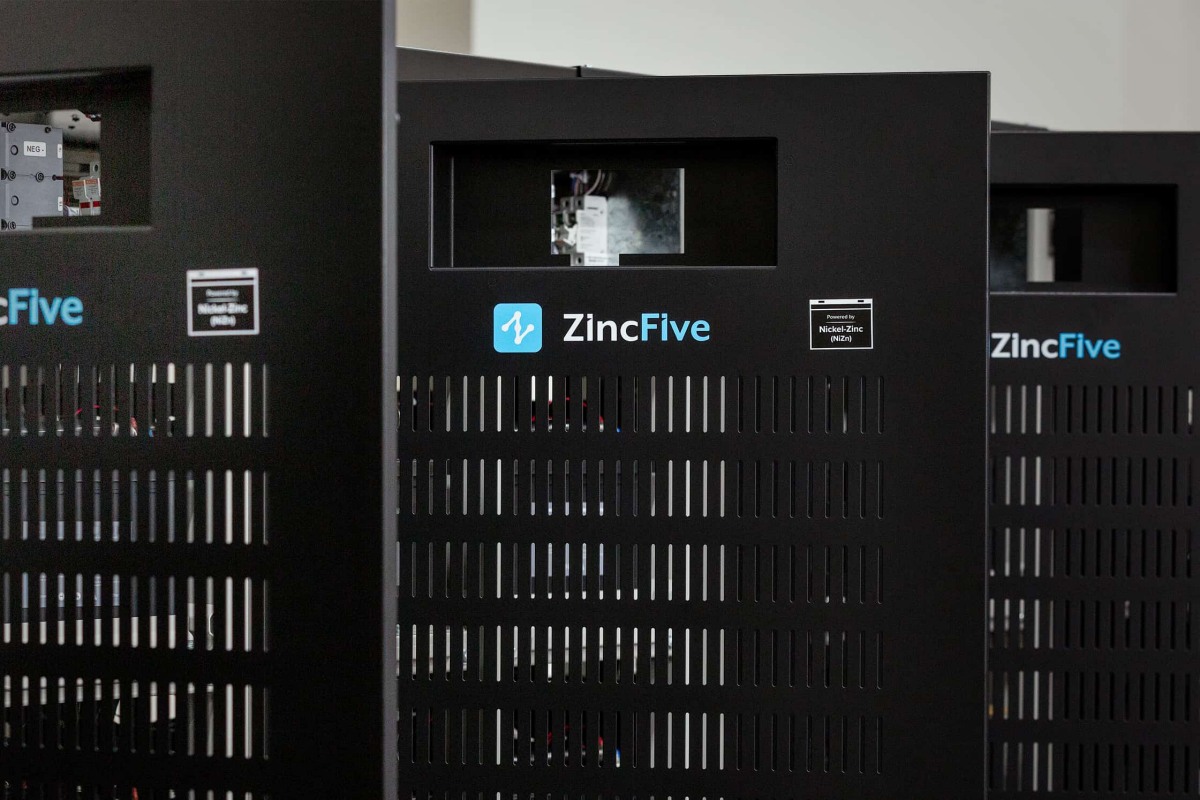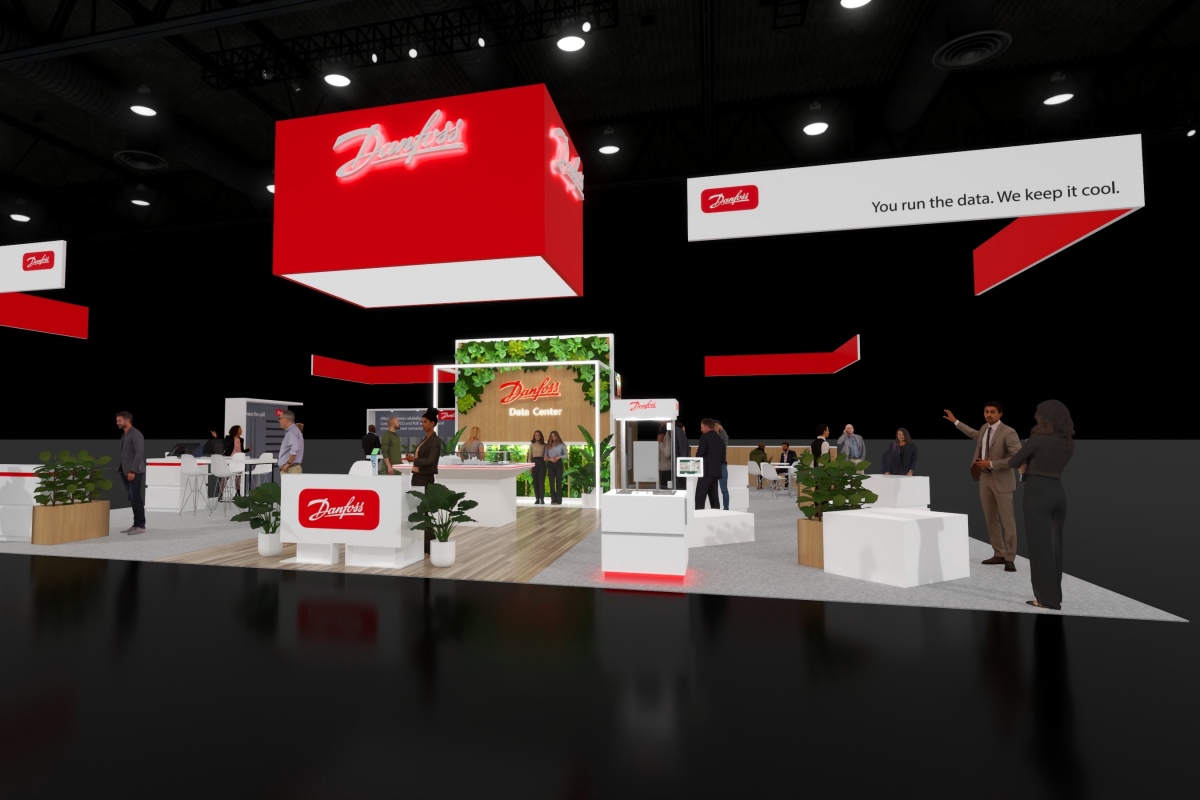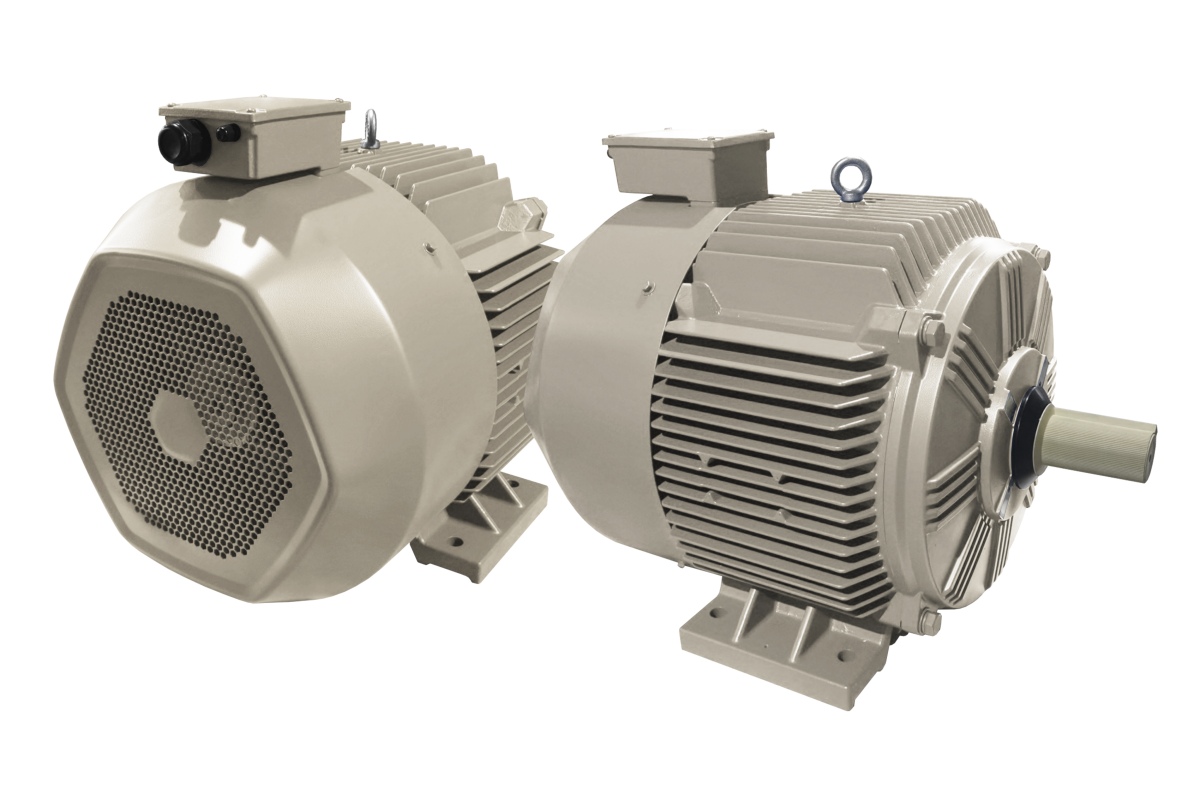6 November 2025
Zoom to open new UK data centre
Zoom to open new UK data centre
6 November 2025
HUMAIN, AirTrunk to build DCs in Saudi Arabia
HUMAIN, AirTrunk to build DCs in Saudi Arabia
5 November 2025
Colt DCS to expand West London hyperscale campus
Colt DCS to expand West London hyperscale campus
5 November 2025
America’s AI revolution needs the right infrastructure
America’s AI revolution needs the right infrastructure
4 November 2025
CDUs: The brains of direct liquid cooling
CDUs: The brains of direct liquid cooling
Latest News
Data Centre Infrastructure News & Trends
Innovations in Data Center Power and Cooling Solutions
News
Products
ZincFive introduces battery system designed for AI DCs
ZincFive, a producer of nickel-zinc (NiZn) battery-based solutions for immediate power applications, has announced a new nickel-zinc battery cabinet designed for data centres deploying artificial intelligence workloads.
The system, named BC AI, is positioned as an uninterruptible power supply (UPS) battery platform that can support both high-intensity AI power surges and conventional backup requirements.
The company says the new system builds on its existing nickel-zinc battery range and is engineered for environments where GPU clusters and rapid power fluctuations are driving changes in electrical infrastructure requirements.
The battery technology is intended to respond to fast transient loads associated with AI training and inference, while also providing backup during power interruptions.
The system includes a battery management platform and nickel-zinc chemistry designed for frequent high-power discharge cycles. The company says this approach reduces reliance on upstream electrical capacity by managing dynamic loads at the UPS level.
Nickel-zinc battery design for transient load handling
As well as incorporating a new nickel-zinc battery cell designed for high-intensity usage and long service life, ZincFive highlights the product's compact footprint and field-upgradeable design.
Nickel-zinc chemistry offers power density characteristics that allow the system to accommodate rapid load spikes without significant footprint expansion. ZincFive says competing approaches may require substantially more physical space to manage similar peak loads, particularly where AI applications can generate power demands above nominal UPS levels.
The system is targeted at hyperscale operators, colocation facilities, and UPS manufacturers integrating AI-ready backup capacity.
The company also points to potential benefits related to infrastructure design, including reduced UPS sizing requirements and support for power-management strategies aimed at improving grid interaction.
Tod Higinbotham, Chief Executive Officer of ZincFive, says, “AI is transforming the very foundation of data centres, creating new challenges that legacy technologies cannot solve.
"With BC 2 AI, we are delivering a safe, sustainable, and future-ready power solution designed to handle the most demanding AI workloads while continuing to support traditional IT backup.
"This is a defining moment not just for ZincFive, but for the entire data centre industry as it adapts to the AI era.”
For more from ZincFive, click here.
Joe Peck - 3 November 2025
Data Centre Operations: Optimising Infrastructure for Performance and Reliability
Data Centre Software for Smarter Operations
News
Red Hat adds support for OpenShift on NVIDIA BlueField DPUs
Red Hat, a US provider of open-source software, has announced support for running Red Hat OpenShift on NVIDIA BlueField data processing units (DPUs).
The company says the development is intended to help organisations deploy AI workloads with improved security, networking, and storage performance.
According to Red Hat, modern AI applications increasingly compete with core infrastructure services for system resources, which can affect performance and security.
The company states that running OpenShift with BlueField aims to separate AI workloads from infrastructure functions, such as networking and security, to improve operational efficiency and reduce system contention.
It says the platform will support enhanced networking, more streamlined lifecycle management, and resource offloading to the DPU.
Workload isolation and resource efficiency
Red Hat states that by shifting networking services and infrastructure management tasks to the DPU, CPU resources can be used for AI applications, also highlighting acceleration features for data-plane and storage-traffic processing, including support for NVMe over Fabrics and optimised Open vSwitch data paths.
Additional features include distributed routing for multi-tenant environments and security controls designed to reduce attack surfaces by isolating workloads away from infrastructure services.
Support for BlueField on OpenShift will be offered initially as a technical preview, with broader integration planned. Red Hat notes that ongoing work with NVIDIA aims to add further support for the NVIDIA DOCA software framework and third-party network functions.
The companies also expect future capability enhancements with the next generation of BlueField hardware and integration with NVIDIA’s Spectrum-X Ethernet networking for distributed AI environments.
Ryan King, Vice President, AI and Infrastructure, Partner Ecosystem Success at Red Hat, comments, “As the adoption of generative and agentic AI grows, the demand for advanced security and performance in data centres has never been higher, particularly with the proliferation of AI workloads.
"Our collaboration with NVIDIA to enable Red Hat OpenShift support for NVIDIA BlueField DPUs provides customers with a more reliable, secure, and high-performance platform to address this challenge and maximise their hardware investment.”
Justin Boitano, Vice President, Enterprise Products at NVIDIA, adds, “Data-intensive AI reasoning workloads demand a new era of secure and efficient infrastructure.
"The Red Hat OpenShift integration of NVIDIA BlueField builds on our longstanding work to empower organisations to achieve unprecedented scale and performance across their AI infrastructure.”
For more from Red Hat, click here.
Joe Peck - 3 November 2025
Data Centre Build News & Insights
News
Renewables and Energy: Infrastructure Builds Driving Sustainable Power
Sustainable Infrastructure: Building Resilient, Low-Carbon Projects
Sabey achieves 25% carbon emissions cut
Sabey Data Centers, a data centre developer, owner, and operator, has announced a 25.2% reduction in Scope 1 and Scope 2 carbon emissions from a 2018 baseline, even as electrical load under management has continued growth in the same interval.
The company’s 2024 Sustainability Report details progress in environmental performance, technology innovation, and clean energy partnerships intended to rival the global data centre sector.
2024 report highlights
The 2024 report shares data on Sabey’s emissions reductions, energy efficiency improvements, and external partnerships.
The company says it continues to align its emissions reductions with its science-based targets and is working to achieve net-zero carbon emissions across Scope 1 and Scope 2 by 2029.
Key developments from the report include:
· Carbon emissions slashed 25.2% from 2018 baseline· Pioneering MOU with TerraPower to explore integrating next-generation nuclear energy· Nine buildings earn ENERGY STAR certification with scores over 90; five receive a score of 99/100
Clear path to net zero
The report outlines the steps Sabey is taking to meet its net-zero goal. These include continued investment in carbon-free energy, improving building operations to reduce energy use, reducing emissions from HVAC and fuel sources, and helping customers better understand their own energy footprints.
Casey Mason, Senior Energy & Sustainability Manager, says, “Data centres are the backbone of the digital economy and [the] AI revolution, but must become stewards of global decarbonisation.
“We are not just on track for net zero by 2029; we're reimagining how critical digital infrastructure can be both scalable and sustainable for the world’s fastest-growing industries.
"Our work with TerraPower, local utilities, and SBTi showcases the kind of bold collaboration needed for a climate-secure future.”
In alignment with the Greenhouse Gas Protocol, Sabey reports on emissions and sustainability efforts annually, engaging with external organisations in the process, including CDP, GRESB, EcoVadis, Atrius, and data centre tenants.
The company’s emissions reporting includes both location-based and market-based accounting methods.
For more from Sabey, click here.
Joe Peck - 31 October 2025
Data Centre Infrastructure News & Trends
Events
Innovations in Data Center Power and Cooling Solutions
News
Danfoss to showcase DC technologies at SuperComputing 2025
Danfoss, a Danish manufacturer of mobile hydraulic systems and components, plans to present its data centre cooling and power management technologies at SuperComputing 2025, taking place 18–20 November in St Louis, Missouri, USA.
The company says it will demonstrate equipment designed to support reliability, energy performance, and liquid-cooling adoption in high-density computing environments.
Exhibits will include cooling components, liquid-cooling hardware, and motor-control equipment intended for use across data hall and plant-room applications.
Danfoss notes that increasing data centre efficiency while maintaining uptime remains a central challenge for operators and developers, particularly as AI and high-performance computing drive increases in heat output and power usage.
Peter Bleday, Vice President, Specialty Business Unit and Data Center at Danfoss Power Solutions, says, “Danfoss technologies are trusted by the world’s leading cloud service providers and chip manufacturers with products installed in facilities around the world.
"We look forward to welcoming visitors to our booth to discuss how we can help them achieve smarter, more reliable, and more sustainable data centre operations.”
Cooling and power management focus
Danfoss will present liquid-cooling components including couplings, hoses, and valve assemblies designed to support leak-tested coolant distribution for rack-level and direct-to-chip cooling.
A smart valve train system providing plug-and-play connection between piping and server racks will also be shown, designed to help optimise coolant flow and simplify installation.
The company's HVAC portfolio will also feature, including centrifugal compressor technology engineered for high efficiency and low noise in compact installations. Danfoss states that this equipment is designed to support data centre cooling requirements with long-term performance stability.
In addition, the manufacturer will highlight its power-conversion and motor-control portfolio, including variable-frequency drives and harmonic-mitigation equipment intended to support low-PUE facilities.
The business says its liquid-cooled power-conversion modules are designed to support applications such as energy storage and fuel-cell systems within data centre environments.
Danfoss representatives will also discuss the company’s involvement in wider sustainability initiatives, including the Net Zero Innovation Hub for Data Centers, where industry stakeholders such as Google and Microsoft collaborate on energy-efficiency and decarbonisation strategies.
For more from Danfoss, click here.
Joe Peck - 31 October 2025
Data Centre Infrastructure News & Trends
Enterprise Network Infrastructure: Design, Performance & Security
News
Arista unveils 800G R4 series networking portfolio
Arista Networks, a provider of cloud and AI networking systems, has introduced a new generation of R4 Series networking platforms designed for artificial intelligence, large-scale data centre environments, and routed backbone deployment.
The new systems are intended to support high-performance compute clusters, low-latency operation, and large routing backbones.
According to Arista, the portfolio is designed to provide high port density and support for 800-gigabit ethernet networks, with integrated security features for encrypted traffic.
Seamus Crehan, President of Crehan Research, says, “The 800GbE market is growing explosively with port shipments more than tripling sequentially in Q2 '25, and Arista led in branded market share for both 800GbE as well as overall data centre ethernet switching.
"These new 800GbE products from Arista are well-timed to capitalise on this segment’s projected 90% five-year average annual growth rate driven by AI, storage, and general compute workloads.”
Arista states that the new systems are designed to reduce operating costs and energy consumption in AI and data centre environments, while supporting routing technologies such as EVPN, VXLAN, MPLS, and SR/SRv6.
The company also highlights engineering for predictable latency and packet-handling performance.
Focus on high-density 800G networking for AI
Arista says the platforms are aimed at workloads including AI training, inference, data centre interconnect, and large-scale routing. The new generation supports a range of 800-gigabit configurations, with capacity options designed for large-enterprise, cloud, and service provider networks.
Tim Smith, Senior Vice President of Technical Infrastructure Engineering and Operations at Magnite, comments, “When Magnite needed to build our next-generation data centre solution for AI and other advanced computing needs, Arista was the clear choice given their high quality offering.
"We've deployed a dense 800G spine using the modular Arista platform with both AI-optimised and high-scale multiservice routing linecards, providing an ideal foundation for the future.”
Arista notes that the systems include options for secure traffic handling with wirespeed encryption across all ports, including MACsec, IPsec, and VXLANsec.
The highest-capacity chassis in the range supports hundreds of 800-gigabit ethernet ports in one system. Arista also introduces its HyperPort interface, which the company says can simplify scale-across network designs and reduce AI workload completion times compared with traditional multi-link configurations.
Supporting spine and leaf deployments
Arista has also expanded its fixed-form systems designed for use as either data centre spines or leaf switches. According to the company, the systems offer flexible port combinations for 800-gigabit and 100-gigabit ethernet environments.
Leaf systems in the portfolio are positioned for direct server connectivity and mixed-workload data centres. These switches include copper and fibre options, uplink ports, and hardware-based encryption support.
Arista says its larger modular systems and several associated linecards are available now, alongside new fixed-format switches. Additional platforms and configurations are scheduled for release in early 2026.
For more from Arista, click here.
Joe Peck - 30 October 2025
Data Centre Infrastructure News & Trends
Enterprise Network Infrastructure: Design, Performance & Security
News
Sparkle's BlueMed submarine cable lands in Cyprus
Sparkle, the first international service provider in Italy, and Cyta, a provider of integrated electronic communications in Cyprus, have announced the arrival of the BlueMed submarine cable at Cyta’s Yeroskipos landing station in Cyprus.
BlueMed is Sparkle's new cable connecting Italy with several countries bordering the Mediterranean and up to Jordan. It's part of the Blue & Raman Submarine Cable Systems - built in partnership with Google and other operators - that stretch further in the Middle East up to Mumbai, India.
With four fibre pairs and an initial design capacity of more than 25 Tbps per pair, the system delivers high-speed, low-latency, and scalable connectivity across Europe, the Middle East, and Africa.
A new PoP in Cyprus
With the branch to Yeroskipos station, Sparkle secures a key point of presence (PoP) in Cyprus, while Cyta gains access to the BlueMed submarine cable system, enhancing connectivity between Cyprus, Greece, and other Mediterranean countries.
This initiative aims to enable Cyta to better meet the growing demand for advanced internet services and digital content in the country, while strengthening Cyprus’ role as a strategic digital hub - providing direct connectivity to Greece, to Western and Central Europe via Genoa and Marseille, and to the Levant through other neighbouring eastern Mediterranean countries.
Enrico Bagnasco, CEO of Sparkle, comments, “This is a new, important stage for BlueMed, a project that embodies our commitment to innovation and collaboration, linking Europe with Africa and the Middle East through state-of-the-art infrastructure.
“Today, we are also particularly glad to celebrate this milestone with our long-standing partner Cyta, confirming our shared commitment to strengthening connectivity in the Mediterranean basin.”
George Malikides, Chief Technology Officer at Cyta, adds, “The connection of Cyta to BlueMed will further enhance the Cyprus digital ecosystem and reinforce the island’s position as a key digital hub in the Eastern Mediterranean."
George Metzakis, Chief Commercial Officer at Cyta, concurs, stating, “The arrival of BlueMed in Cyprus marks a pivotal step forward in our ongoing mission to strengthen the island’s international connectivity.”
BlueMed has received funding from the European Commission under the Connecting Europe Facility (CEF) programme, highlighting its strategic relevance for improving digital resilience and connectivity across Europe and beyond.
Joe Peck - 30 October 2025
Data Centre Build News & Insights
Data Centre Business News and Industry Trends
Data Centre Projects: Infrastructure Builds, Innovations & Updates
Insights into Data Centre Investment & Market Growth
Equinix announces £3.9 billion UK data centre investment
Digital infrastructure company Equinix has acquired an 85-acre site in Hertfordshire, where it plans to develop a large-scale data centre campus.
The company says it intends to invest £3.9 billion in the project, which is expected to deliver more than 250 MW of compute capacity.
According to Equinix, the campus will support both domestic and international organisations across sectors including healthcare, life sciences, public services, financial services, manufacturing, and entertainment.
The development is also referenced by the company as part of broader ambitions around sovereign AI capability in the UK.
The site, previously known as DC01UK, is expected to create around 2,500 construction jobs and, once operational, more than 200 permanent roles. KPMG estimates that direct and indirect employment could generate roughly £120 million in wages.
KPMG analysis also suggests the project could contribute up to £3 billion in annual Gross Value Added during construction, and up to £260 million once operational, reflecting supply-chain activity and wage spending.
DC01UK, commenting on the sale of its site to Equinix, states, "The deal represents one of the largest infrastructure and real estate transactions in the world in recent years. This milestone transaction marks a defining moment for UK digital infrastructure.
"With a projected total investment value in the region of £3.9 billion, the deal lays the foundation for one of Europe’s largest and most advanced data centre campuses - a project of unprecedented scale and ambition that will drive the next wave of cloud and AI innovation."
Economic and community impact
Equinix says it intends to work with local organisations on education, skills, and environmental programmes linked to the development.
The company notes it has operated data centres for 27 years and currently runs more than 270 facilities across six continents. In the UK, Equinix supports over 1,300 customers and employs more than 1,200 people.
James Tyler, UK Managing Director at Equinix, says, “The UK is a cornerstone of the global economy and is a natural home for our most substantial investment in Europe to date. This development brings a significant amount of data centre capacity to Britain, contributing to the government’s AI growth ambition.
"But this investment goes far beyond building the infrastructure needed to unlock the UK’s digital potential; it’s the evolution of an ongoing partnership with the local and national community.”
Liz Kendall, Secretary of State for Science, Innovation, and Technology, comments, “This £3.9 billion investment is a huge win for Britain. It will give businesses - from life sciences to high street banks - the ability to connect to thousands of other businesses across the world in an instant, powering our AI ambitions, boosting growth and creating hundreds of well-paid jobs.
"This is about making sure the UK is at the forefront of the digital revolution and ensuring that every community benefits from the opportunities this new technology brings.”
Luisa Cardani, Head of Data Centres at techUK, adds, “This announcement reflects the scale of opportunity the UK has to strengthen its digital foundations.
"As highlighted in our Foundations for the Future report, data centres are the backbone of our economy: they enable innovation, productivity, and growth across every sector.
"Continued investment in sustainable, resilient digital infrastructure will be critical to delivering on the UK’s ambitions for AI and long-term economic prosperity.”
Sustainability measures and site plans
The company states that all its sites in Europe, including the UK, are powered by 100% renewable energy, and it is targeting global coverage by 2030.
At the Hertfordshire campus, Equinix plans to use dry-cooling technology, to retain more than half the land as open space, and to create ecological habitats to achieve at least a 10% biodiversity net gain.
Equinix also says the campus will be designed to enable heat reuse for local benefit in the future.
The company’s existing UK presence includes 14 data centres, which support UK-based and global customers, and heat export capability across sites.
For more from Equinix, click here.
Joe Peck - 30 October 2025
Data Centre Infrastructure News & Trends
Innovations in Data Center Power and Cooling Solutions
Products
Wolong introduces efficient motors for DC cooling applications
Wolong Electric America, a developer of industrial motor and drive technology, has introduced its Permanent Magnet Direct Drive (PMDD) motors, highlighting their ability to improve energy efficiency and reduce heat generation in high-demand environments such as data centres.
Designed to operate without belts or sheaves, PMDD motors use a direct drive system that reduces mechanical complexity and common failure points, improving reliability and minimising maintenance requirements.
The approach should also reduce mechanical stress and radial load on bearings, contributing to a longer service life.
Lower heat output and energy use in data centres
At the core of each motor is a rare earth magnet design that delivers stronger magnetic fields in a compact form factor.
This aims to enable higher efficiency and cooler operation compared with traditional induction motors, which would be a key advantage in temperature-sensitive environments such as data centres, where controlling internal heat and power consumption are constant priorities.
The motors are operated via a variable frequency drive (VFD), enabling precise speed control, smooth acceleration and deceleration, and reduced electrical strain on supporting systems.
A 4:1 turndown ratio allows the motors to maintain torque and efficiency - including at low speeds - supporting variable airflow demands within cooling systems.
Wolong Electric says its PMDD motors can be integrated directly into fan assemblies, reducing overall system losses and eliminating inrush current at startup.
With reported efficiency improvements of around 20% over conventional induction motors, the design should contribute to measurable reductions in both energy use and waste heat.
Flexible configurations for critical environments
Wolong Electric says the PMDD motors can be tailored to specific applications, including data centre cooling systems, refineries, and OEM equipment such as heat exchangers.
The motors are designed to operate at lower temperatures and with reduced maintenance demands, supporting long-term reliability and stable thermal management across facility operations.
The company’s design approach hopes to enable easy integration with OEM and packaged system configurations, helping operators meet efficiency goals while aligning with evolving energy standards.
Joe Peck - 29 October 2025
Data Centre Build News & Insights
Data Centre Business News and Industry Trends
Data Centre Projects: Infrastructure Builds, Innovations & Updates
Insights into Data Centre Investment & Market Growth
Data centre spending to quadruple by 2029 across UK
Spending on new data centres across Britain is set to reach an incredible £10 billion per year by 2029, according to new analysis by construction data experts Barbour ABI.
That is more than four times as much as the current £1.75 billion being spent per annum.
Atop this, the report states that, as investors seek cheaper land costs and cooler climates, the data centre drive will spread north - away from just London - and into Wales.
Nearly 100 data centres are currently in planning, with strong growth driven by demand from AI technologies and the internet of things (IoT).
The impact of this rapid growth
“With exponential growth of this kind, sustainability must be at the forefront of industry strategy if we are to avoid an environmental disaster,” notes Ed Griffiths, Head of Business and Client Analytics at Barbour ABI.
“Data centres are now recognised as Critical National Infrastructure (CNI). However, given the immense power they consume, operators will come under growing pressure to adopt greener practices.
“While many firms are pledging to use 100% renewable energy and implement energy-efficient technologies, there is currently no requirement to report energy usage publicly, so it will be difficult to hold them to account.”
As the need for data processing accelerates, the market is forecast to attract over £25 billion in inward investment over the next five years, according to Barbour’s latest data centre construction market report.
This surge in capital is reshaping the data centre construction landscape, with a rapid pipeline of new developments already underway.
Hyperscale facilities outside of urban areas
Growth is being supported by government initiatives such as 'AI Growth Zones', which aim to streamline the planning process and support the delivery of new infrastructure.
“The impact of AI is one of the most significant trends shaping the future of the data centre industry,” continues Ed. “As AI technologies become integrated into daily operations, the need for high-performance data centres is becoming critical.
"Operators are investing in hyperscale facilities outside of urban areas, designed to manage immense computing workloads.”
While London and the Southeast have traditionally dominated the sector, data centre development is now expanding nationwide. Barbour ABI found that regions such as the Northeast, East of England, and Wales are becoming increasingly attractive for new projects.
This shift is being driven by greater land availability, lower costs, cooler climates, access to renewable energy, and targeted regional growth policies.
The UK’s largest planned data centre project is located at Northumberland Energy Park in Blyth. Backed by US asset management firm Blackstone, the development is expected to be worth £10 billion.
Whilst the sector seems ripe for investors looking for big wins in the next few years, Ed does add a note of caution, stating, “While the headline story for data centres is one of growth and innovation, the industry faces real challenges.
"Rising energy costs, constraints on supply and land, planning barriers, and a shortage of skilled labour could all affect the pace of expansion.”
Joe Peck - 29 October 2025
Data Centre Infrastructure News & Trends
Innovations in Data Center Power and Cooling Solutions
Sponsored
AI is reshaping data centres - are you ready?
As AI workloads surge, data centres face unprecedented challenges in power quality, grid stability, and sustainability. Hitachi Energy is leading the charge with advanced HVDC and grid integration solutions designed to meet the evolving demands of hyperscale and colocation facilities.
The company's solutions empower operators to maintain uptime, reduce environmental impact, and comply with global grid codes, while transforming data centres into versatile energy contributors.
From battery energy storage systems (BESS) to hydrogen generators and microgrids, Hitachi Energy helps you balance erratic AI loads and ensure seamless grid reconnection.
With standardised, scalable designs and deep consulting expertise, the company tailors infrastructure to your unique needs - delivering performance, reliability, and sustainability at scale.
Data centres must evolve to stay resilient. Discover how to adapt to the future of data centre infrastructure by reading the full article here.
For more from Hitachi, click here.
Joe Peck - 29 October 2025

Head office & Accounts:
Suite 14, 6-8 Revenge Road, Lordswood
Kent ME5 8UD
T: +44 (0)1634 673163
F: +44 (0)1634 673173









